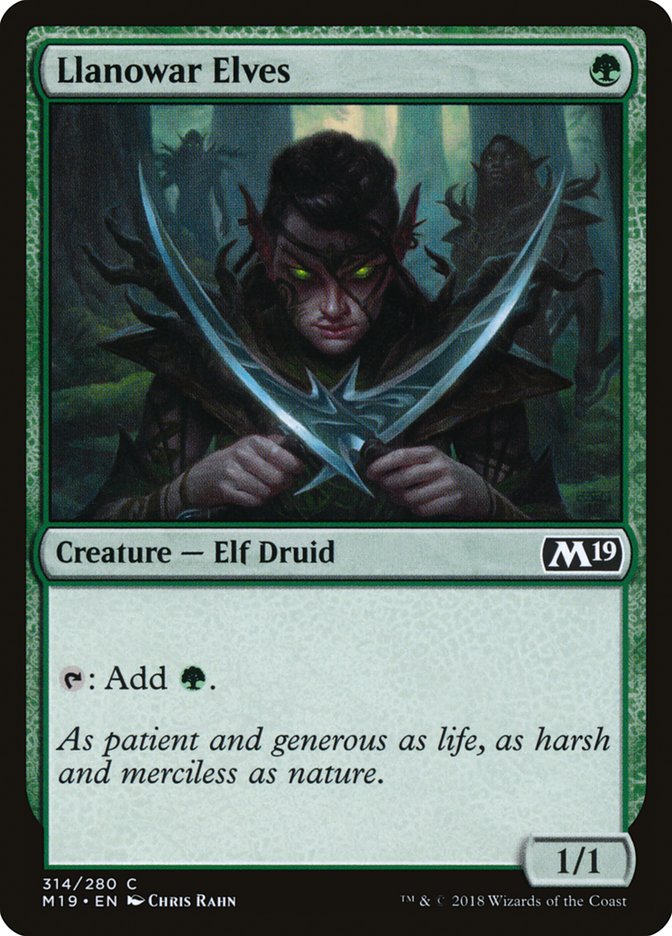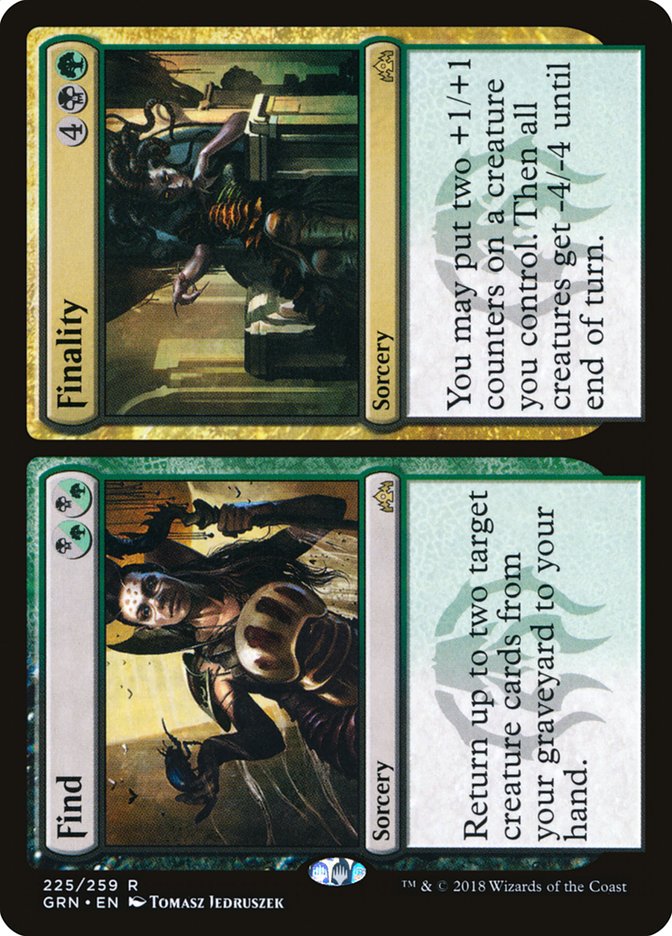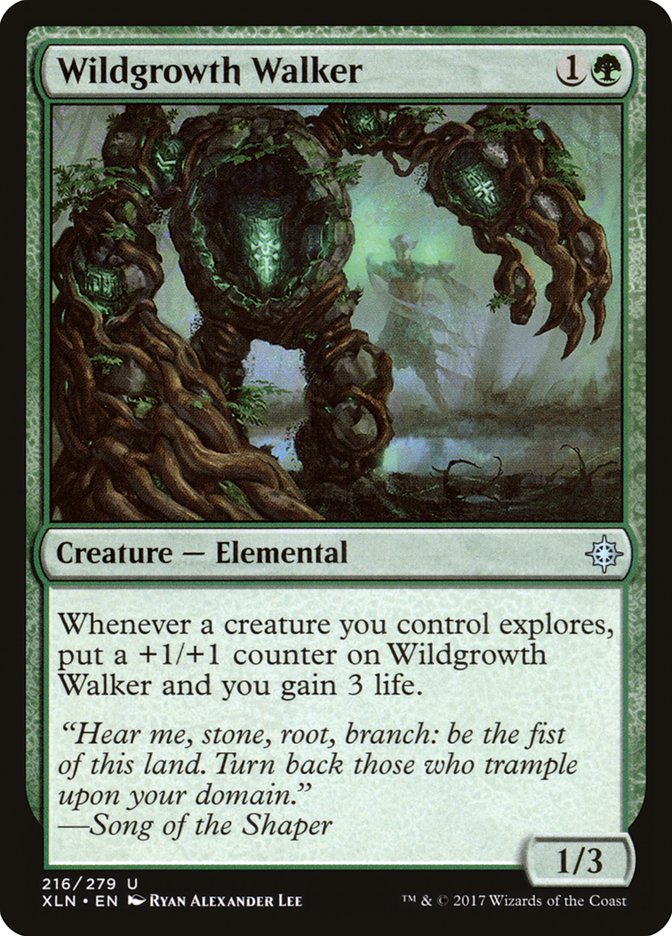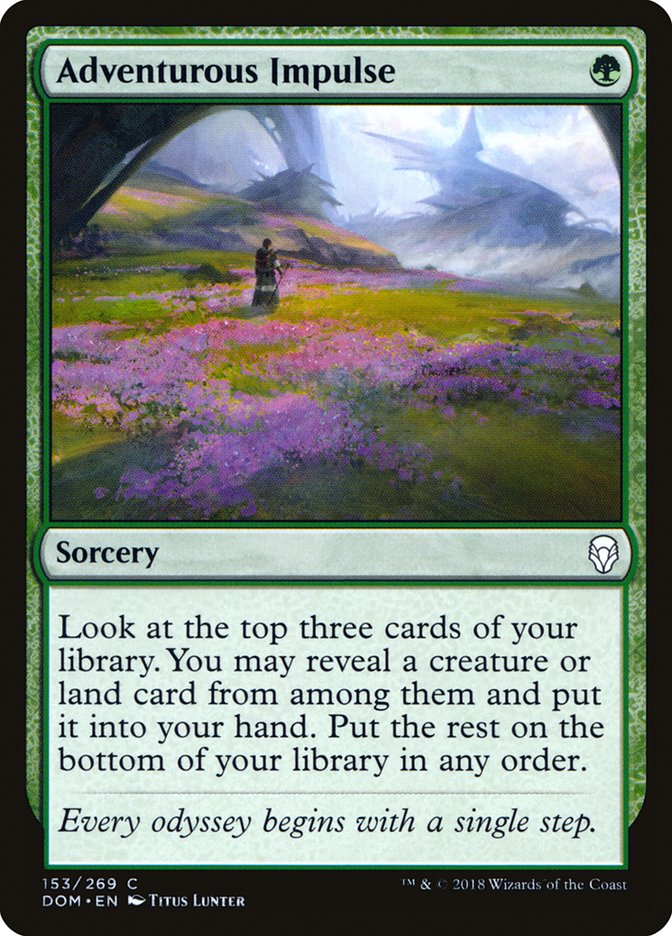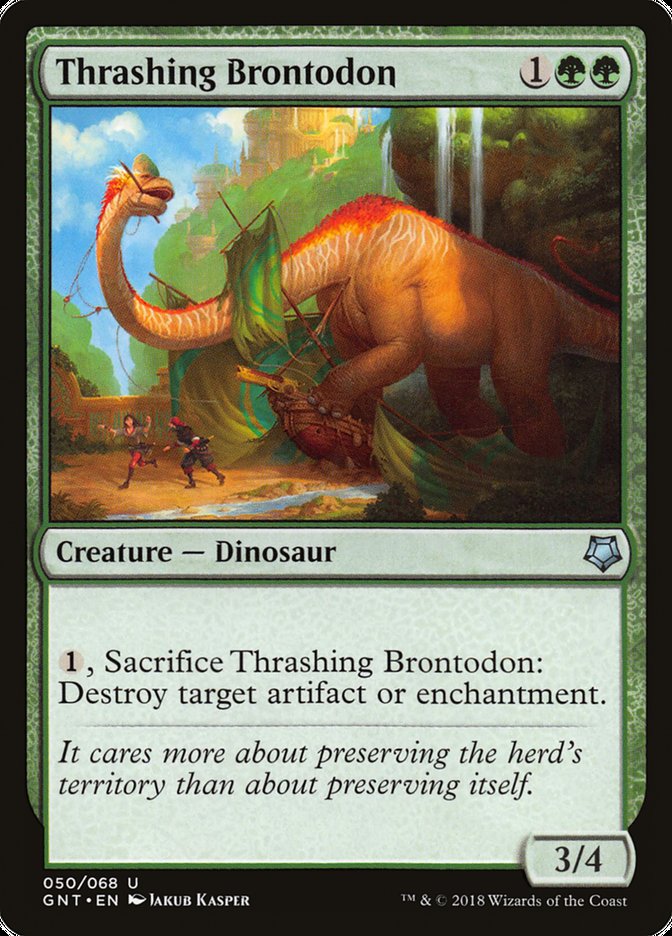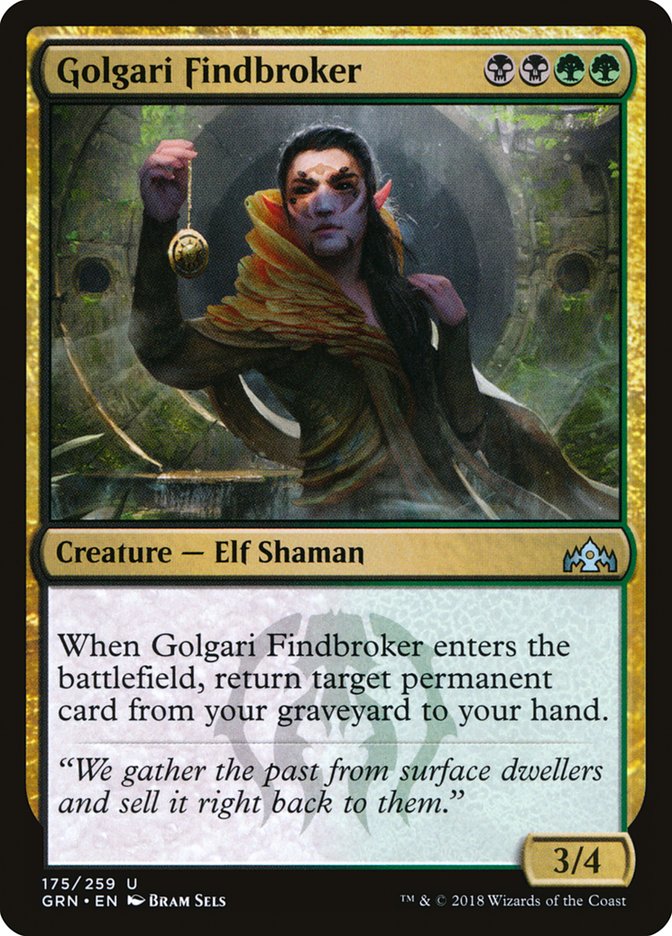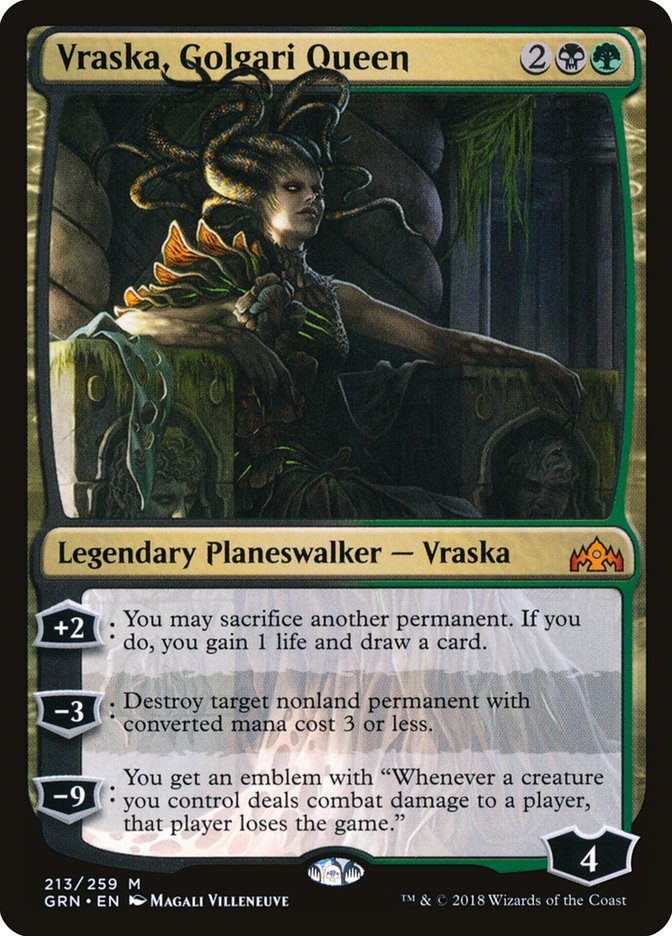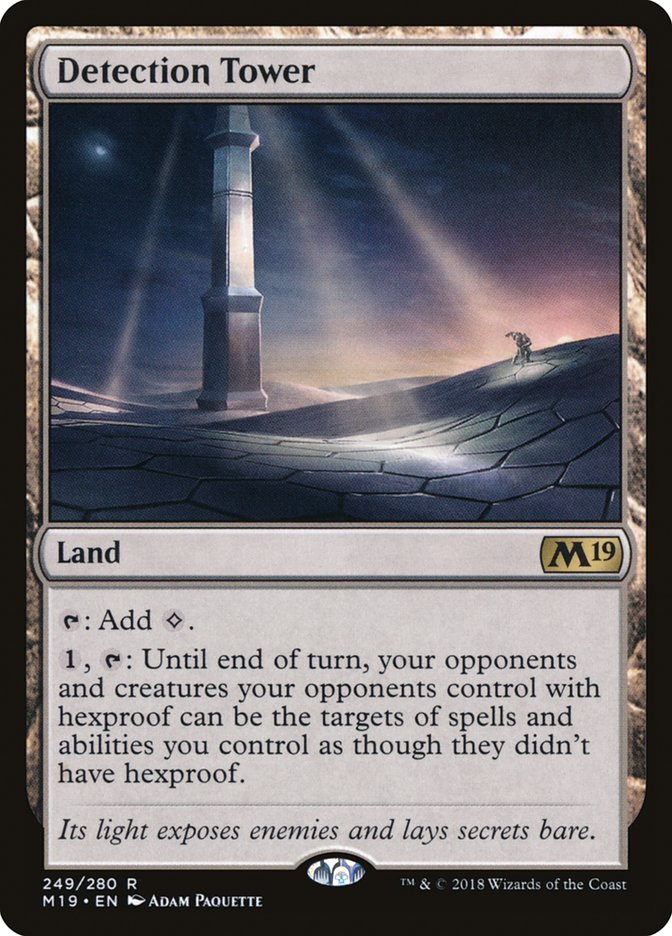In the run up to Pro Tour Guilds of Ravnica, it was clear I wanted
to collaborate with Jadine Klomparens after our prior success working
together on the Dimir Midrange deck that qualified us both for the Pro Tour
via our respective RPTQs. Ultimately this collaboration would result in a
Golgari Midrange deck which would take me to a 20th place finish at this
Pro Tour. If you’d like to read about the testing process we went through
in preparation for Pro Tour Guilds of Ravnica that would lead to
this very non-stock Golgari Midrange list, check out
Jadine’s great article on this.
Following on from her article, I’m looking to talk about the end product
of this testing and the reasoning behind all the card choices that we
landed on.
Creatures (23)
- 2 Carnage Tyrant
- 4 Wildgrowth Walker
- 4 Merfolk Branchwalker
- 3 Seekers' Squire
- 2 Thrashing Brontodon
- 4 Jadelight Ranger
- 3 Ravenous Chupacabra
- 1 Midnight Reaper
Planeswalkers (5)
Lands (23)
Spells (9)
Sideboard

The question I get asked most often whenever I play Golgari Midrange is why
Jadine and I choose to exclude Llanowar Elves from our Golgari Midrange
lists. This is an understandable question, as Llanowar Elves offers a
massive burst of power to the strategy allowing you to power out early
planeswalkers, Carnage Tyrants, and Doom Whisperers. Essentially Llanowar
Elves gives you access to nut draws that allow Golgari to actually
overpower people in the early stages of the game, but I believe this comes
at a cost.
Golgari Midrange is a deck that naturally forces the game to go long. It
doesn’t kill quickly and features interaction that slows the pace of the
game. Meanwhile, Llanowar Elves is a card that wants to accelerate the pace
of the game. These things aren’t necessarily completely at odds with each
other as a deck that kills slowly might appreciate having access to mana
accelerants that allow it to kill at a more reasonable pace when it has
them in its opening hand, but the flipside of this is that having a bunch
of Llanowar Elves in your deck means that when you don’t have one in your
opening hand, and you’re killing your opponent slowly, the average quality
of your draw step is just going to be that much lower. The worse you make
your average draw step in the lategame like this, the less able you are to
hold on to your advantageous position.
There are other issues too. Being able to mill Llanowar Elves to explore
triggers helps reduce the risk of drawing the card later in the game, but
every time you reveal a Llanowar Elves to an explore trigger only to
immediately mill it, you’ve declined yourself the option of instead
revealing a card that you may want to keep – removing decisions like this
removes the amount of control you have over the direction the game heads
in. Additionally, there are a few matchups where your plan is to cast
Finality at some point in the game so that you can clear away your
opponent’s dominant battlefield. While it’s true that Llanowar Elves helps
make you more able to consistently cast Finality, it also incurs more
collateral damage from the card, making resolving the card less
advantageous for you also.
Finally, the most convincing argument against Llanowar Elves is that the
card plays very poorly with Wildgrowth Walker. The vast majority of the
time you want to cast Wildgrowth Walker before you cast your explore
creatures to ensure the Wildgrowth Walker grows as big as it can as fast as
it can. The result of this is that you would often end up casting your
Llanowar Elves on turn 1, only to decline casting your Jadelight Ranger on
turn 2 to cast your Wildgrowth Walker instead, thereby not using the extra
mana your Llanowar Elves offers.
Maybe you even end up casting your Jadelight Ranger on turn 3 now to grow
the Walker as much as possible, thereby declining even more usage of your
Llanowar Elves. It’s a subtle tension, but one that kept coming up time and
time again as Jadine and I would make the deck more and more a Wildgrowth
Walker deck. I don’t believe by any means that it’s strictly incorrect to
play Llanowar Elves, and in fact, I think the decision on whether to play
the card is actually a fairly close decision, but the card just doesn’t fit
in with my understanding of how the deck is trying to function. At the very
least, I think the more you look to make your deck a Wildgrowth Walker
deck, the less you want it to be a Llanowar Elves deck, and that Llanowar
Elves builds of Golgari likely want to look quite different from how we
built the deck.
Along these lines, Jadine and I got really caught up on the idea that
Golgari Midrange was very much a Wildgrowth Walker deck before anything
else. Wildgrowth Walker is honestly pretty obscene simultaneously making
your opponent’s offense irrelevant, swinging races in your favor (often to
the point that they no longer resemble races), and paying you off for
making the game go long. Our focus on the card is likely a big part of the
reason why we were finding the matchups against the white aggressive decks
to be quite favorable for us in testing even despite Golgari Midrange in
general seemingly putting up poor results against these decks at the Pro
Tour – a Wildgrowth Walker on turn 2 really does just swing these matchups
that much, so much so that playing Druid of the Cowl instead seems highly
irresponsible to me if you expect a large amount of Mono-White or Boros
Aggro.
We wanted to have Wildgrowth Walker on turn 2 followed by an explore
creature on turn 3 so much that we turned to Adventurous Impulse to help
ensure this happened as much as possible. With no Llanowar Elves in the
deck, we’d often have mana to spare on turn 1 for a play like this, and it
not only helped up the chance of having a strong Wildgrowth Walker draw
against the aggressive decks but also smoothed out the consistency of the
deck, made a wider range of hands keepable, and allowed some extra play
against Tocatli Honor Guard by allowing you to dig for extra land drops
when the Honor Guard is turning off your explore creatures. Adventurous
Impulse specifically plays quite poorly with explore triggers, but I was
generally pretty pleased with the card regardless both in testing and in
the tournament.
A big motivator for being so all in on Wildgrowth Walker is that we didn’t
believe the card was actually bad in any major matchup (the card is bad
almost exclusively against decks that maindeck Ritual of Soot and combo
decks in the style of Bant Nexus or Five-Color Lich’s Mastery, none of
which see much play currently). Against Jeskai Control, the card insulates
you against Deafening Clarion by quickly growing to four toughness and can
often lead to play patterns where your Wildgrowth Walkers force your
opponent to use up one of their precious Cleansing Novas, which clears the
way for your follow up Carnage Tyrant. Against Selesnya Tokens, the
lifegain makes it much harder for your opponent to actually set up the
March of the Multitudes into Flourish combo kill. Even in the mirror, we
were finding the card at least demanded an answer, which is better than
what a lot of your cheap spells do there whilst both making Carnage Tyrant
less scary with the lifegain, giving you extra bodies that live through a
Finality from either side and giving you a creature that is bulky enough
that it can actually pressure a Vivien Reid.
Our inclusion of two maindeck Thrashing Brontodons started out as a way to
fight Jeskai’s Deafening Clarions in much the same way that Wildgrowth
Walker does, overloading what few answers that deck has to creatures with
more than three toughness. It’s also incidentally an amazing blocker
against Adanto Vanguard, and over the course of the Pro Tour destroyed many
Conclave Tribunals in addition to The Immortal Sun, History of Benalia,
Legion’s Landing, Experimental Frenzy, and Path of Discovery. Some of these
aren’t the most exciting targets, but having such versatility tacked on to
a body that you’re already in the market for in this format is very
appealing. We came to the decision that Thrashing Brontodon is one you
wanted against all the tier one archetypes except for the mirror which
makes it much more than the sideboard card it has just been treated as.
A nice upside of leaning into Thrashing Brontodon is that it meant we could
lean away from Golgari Findbroker, a card that in stark contrast was only
appealing in the mirror and against Jeskai Control. The card is mopey,
slow, and hard to cast, often doesn’t play well on curve, and doesn’t
really solve many problems that the deck needs to solve. It’s specifically
very good with Vivien Reid, as grabbing a copy off of Vivien’s +1 insulates
your Vivien against Assassin’s Trophy, but I’m pretty off making these
concessions to the mirror match. I believe that Golgari bending over
backwards to fight the mirror is a big part of the reason it has been
posting less impressive results as of late, and that moving towards playing
less cards that are only good in the mirror and more cards that are good
against the rest of the field is a necessary step for the deck.
If we’d known that Jeskai Control would be as under-represented as it was
at the Pro Tour, I suspect we would have included a bit more removal in our
maindeck, but Vraska, Golgari Queen was meant to be a hedge in this regard
– a way for us to fit in an additional removal spell in to the maindeck
without lowering our threat density against control.
The Detection Tower in the sideboard is a really smart piece of technology
for two reasons. One is that with the mirror so often revolving around
Carnage Tyrant, having a land that you can find off Vivien Reid,
Adventurous Impulse, and explore triggers that means your opponent’s
Carnage Tyrants now just die to everything is often game-ending. Meanwhile
a sideboard land means you can have enough lands after sideboarding that
you can afford to sideboard out your Adventurous Impulses against decks
like Jeskai Control and Mono-Blue Aggro where you’re sideboarding in a lot
of non-creature spells that Adventurous Impulse can’t find for you.
VS Boros Aggro
Out:
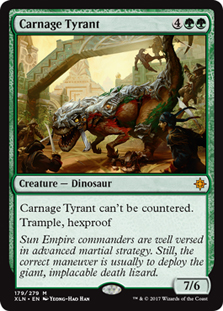

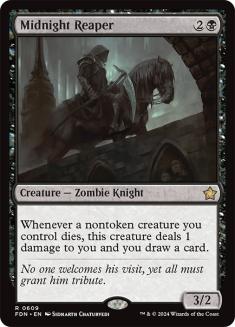
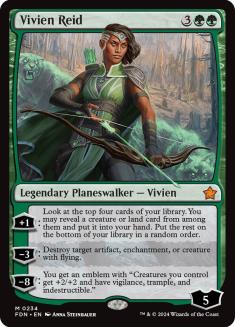
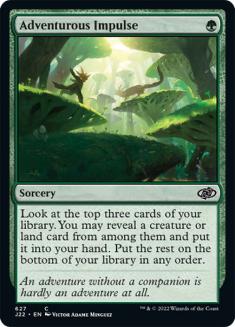

In:
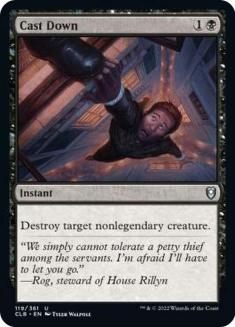


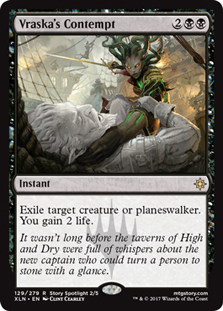


Preserve your answers to deal with Benalish Marshal and Tocatli Honor
Guard, try and build towards a profitable Finality if possible, and if you
don’t have access to a planeswalker or Wildgrowth Walker, be prepared to
try and turn the corner quickly to try and cut your opponent off as many
draw steps as possible. I think this matchup is pretty good with the way
the deck is constructed currently, though if you want to swing it even more
in your favor, consider some number of Golden Demise in the sideboard.
VS Izzet Drakes
Out:


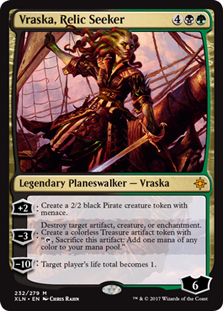


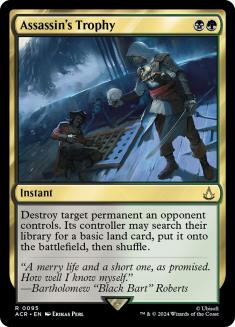



In:





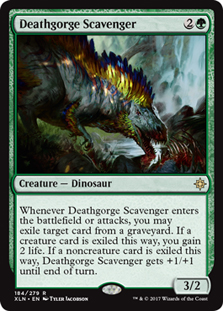



Game 1 is very challenging, but you make up a lot of ground after sideboard
by taking out expensive top-end, adding more removal, and becoming
essentially an aggro deck. You don’t have the long-game in the matchup
because of how well the Drakes scale as games go long, so try to get your
opponent dead. Be aware that combining a Cast Down with a Deathgorge
Scavenger trigger can allow you to efficiently deal with an Arclight
Phoenix for good.
VS Jeskai Control
Out:
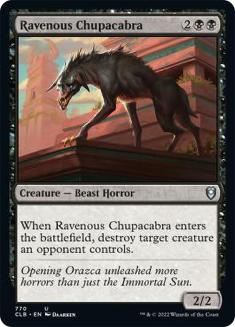


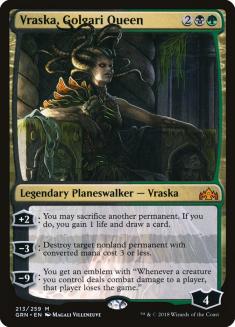



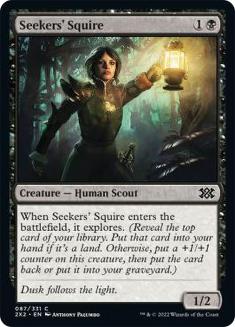

In:






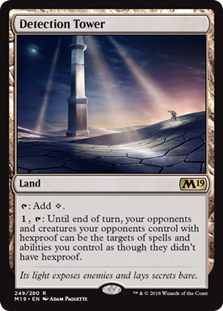


These games revolve around trying to set up Carnage Tyrant. Force your
opponent to spend Cleansing Novas to answer your Wildgrowth Walkers and
Thrashing Brontodons and clear our Carnage Tyrant answers with Duress to
ensure that your Death Lizard remains as implacable as ever.
VS Golgari Midrange
Out:



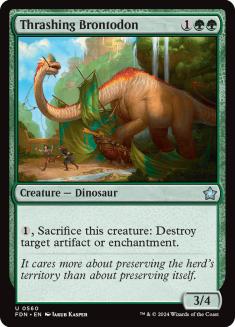


In:






When Aaron Barich and I played the 75-card mirror in round fourteen of the
Pro Tour, we both went against our sideboard guides and sideboarded in some
number of Duress in the post-board games both to protect ourselves from
opposing planeswalkers and to strip removal from our opponent’s hand to set
up our own planeswalkers. This is a very valid thing to do but depends a
lot on how you expect your opponent’s list to look after sideboard.
VS Selesnya Tokens
Out:






In:






Vary the Duress numbers based on exactly how many non-creature spells you
expect from your opponent. Two copies is the minimum I’d sideboard in due
to how threatening March of the Multitudes can be, but you can definitely
sideboard higher on the card depending on how focused your opponent is on
non-creature spells.
VS Mono-Red Aggro
Out:









In:









VS Mono-Blue Aggro
Out:













In:













Overall, I was very pleased with our Golgari Midrange list and am looking
to experiment more with the list moving forward. I think the way we have
our list tuned makes it an appealing choice among the rise of white
aggressive decks, and if you’re looking to slant yourself even more towards
beating those decks there are plenty of options available (most obviously,
adding a sweeper or two to the sideboard).


